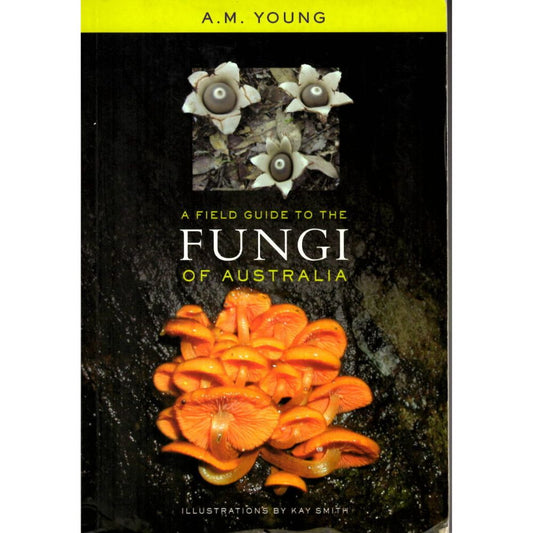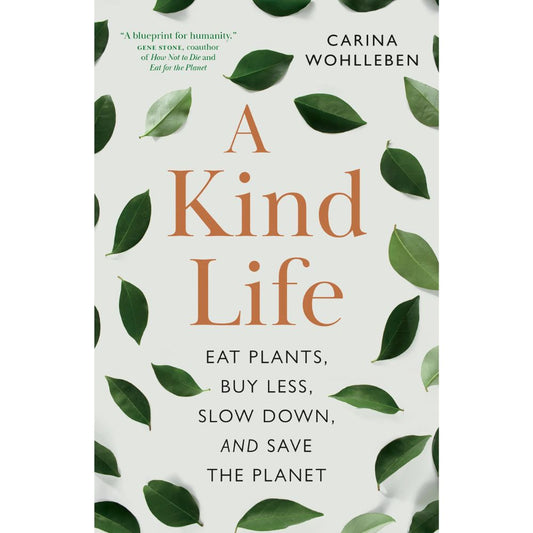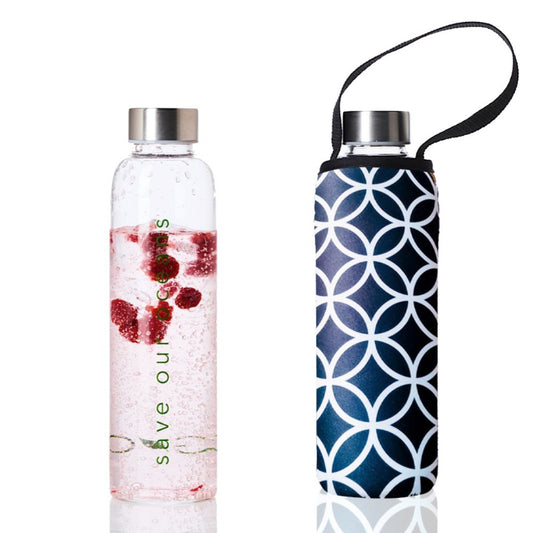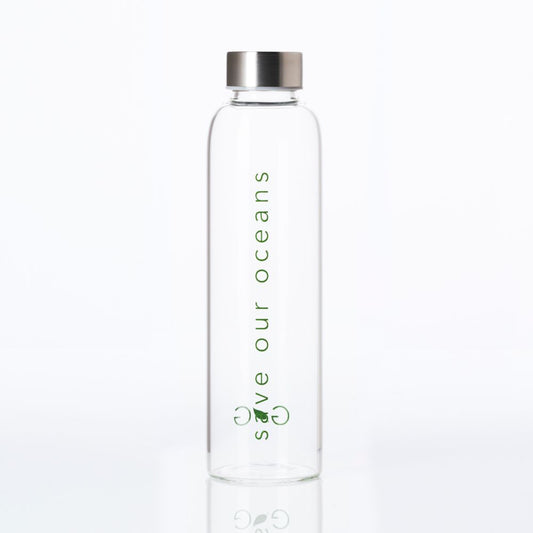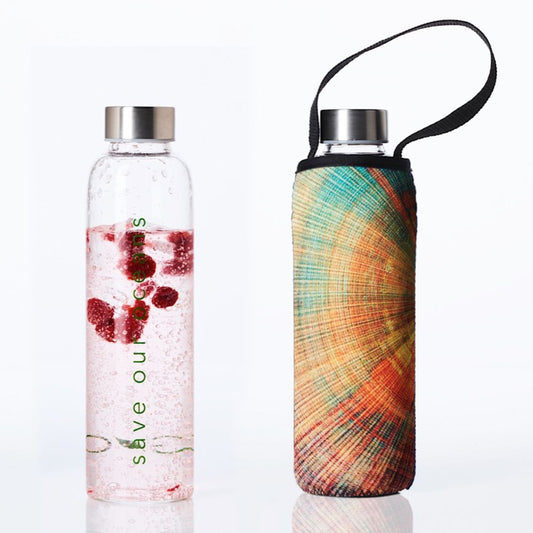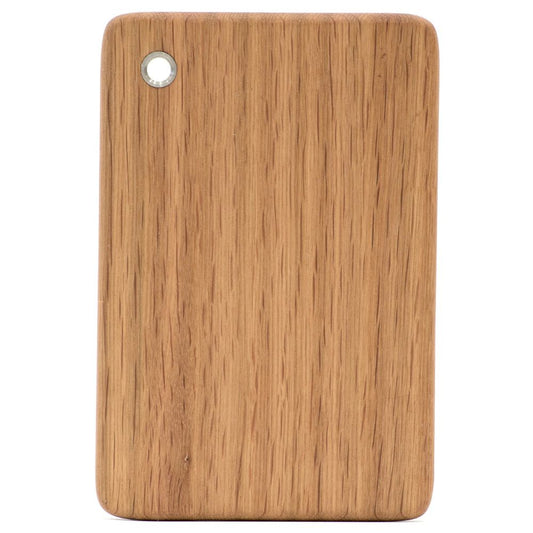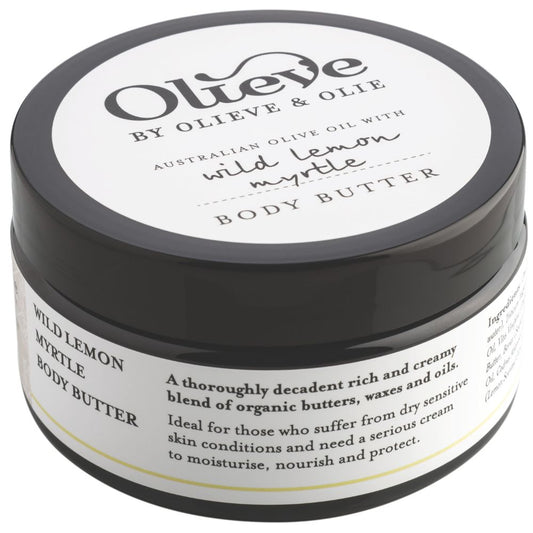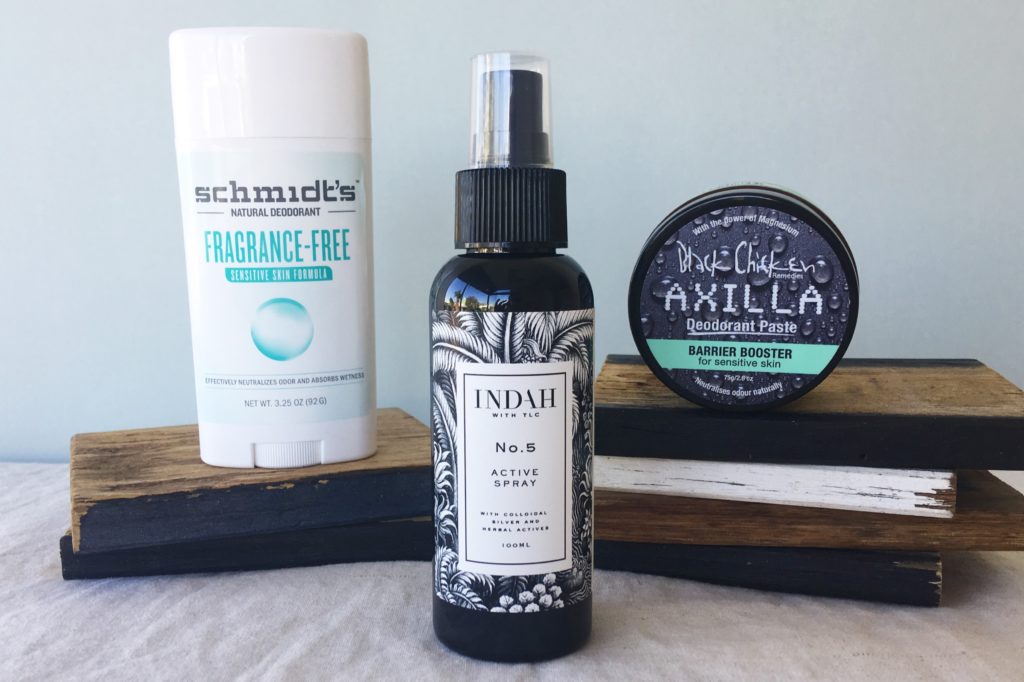 Some people react to bi-carb soda in natural deodorant. Here we give you the skinny on some excellent alternatives.
Some people react to bi-carb soda in natural deodorant. Here we give you the skinny on some excellent alternatives.
Natural deodorant and bi-carb soda
More and more people are turning to natural deodorants to keep their underarms fresh as a daisy. With a proliferation of options now on the market, people are embracing the new non-toxic way of having healthy, clean underarms. Most natural options contain bi-carb soda, which is a wonderful odour neutralizer. Bi-carb is often used in beauty and natural cleaning products, as well as cooking. While the majority of people use these bi-carb containing deodorants with no adverse effects, some people report reactions. These reactions are due to their skin being sensitive or inflammatory and bi-carb acts as a skin irritant for them. People sensitive to bi-carb report reactions ranging from rashes to pain.
Benefits of natural deodorants
Firstly, let's look at the benefits of natural deodorants. As opposed to traditional antiperspirants, natural deodorants don't close up the pores. Natural deodorants simply neutralize the odour from the bacteria in the armpit. Traditional ones use aluminium to tighten the pores, thereby blocking toxin release. Increasingly, health conscious people are shunning deodorants containing aluminium because of potential adverse health effects. After using natural deodorants for a while you might find that your armpit odour naturally lessens. This is a result of toxins being freely released. The pores are not clogged and the bacteria is being neutralized with ingredients such as kaolin clay, arrowroot and bi-carb soda. These new front-line natural deodorants are surprisingly effective at keeping odour to a minimum even in harsh and humid climates.
What is bi-carb soda?
So what exactly is bicarbonate soda? It is simply a chemical compound made up of sodium ions and bicarbonate ions. It is a type of salt found in many mineral springs and is widely used in cooking, as a mild disinfectant, fire extinguisher as well as medical uses and pest control. Bi-carb soda, depending on what it is mixed with, interacts with the skin's acid mantle and this could be a potential trigger for skin irritation. Unfortunately, some people are more prone than others to have this reaction.
Alternatives for sensitive skin
So, what can be done? If you think you have a sensitivity to bi-carb, there is no reason to go rushing back to antiperspirants. There are now a number of natural deodorants that contain beneficial ingredients minus bi-carb soda. And the good news is they are just as effective at stopping odour!
Black Chicken Barrier Booster for Sensitive Skin

Biome stocks a number of trusted brands such as
Black Chicken's Barrier Booster for Sensitive Skin, which contains helpful fatty acids and lipids to help calm inflammatory skin. Black Chicken's Barrier Booster for Sensitive Skin contains magnesium hydroxide, which is said to be alkalizing and calming for the skin. It also has absorbent properties which makes it ideal as a deodorant. Barrier Booster for Sensitive Skin also contains Diatomaceous Earth, a curious sounding but excellent cure-all substance made up of tiny particles of aquatic organisms called diatoms (Diatomaceous Earth is vegan). These form a honeycomb matrix containing silica which is ground into a fine white powder. Food grade Diatomaceous Earth lightly exfoliates, detoxifies and kills parasites among other uses. It is similar to other clays as it dries toxins and purifies the skin with no side effects.
Good + Clean Deodorant Creme  Good + Clean deodorant creme
Good + Clean deodorant creme is a creme-to-powder, unscented natural deodorant paste to leave you smelling good and clean throughout the day. Free from aluminium and ingredients like bi-carb , this paste is certified vegan and cruelty free. Full of moisturising plant butters and oils to nourish your skin and mineral powders to keep you dry. Australian made. The unscented version is free from essential oils.
Indah No. 5 Active Spray
 Indah's No. 5 Active Spray
Indah's No. 5 Active Spray uses colloidal silver and a mixture of powerful herbal actives to neutralise odour. It also makes use of the powerful anti-inflammatory properties found in the Marshmallow plant. Like Biome, Indah is Approved by Palm Oil Investigations. Happily, these vegan and
palm oil free alternatives will nourish the skin but also stop odour. Going aluminium free, even in Australia's demanding climate, has never been easier.
Shop all natural deodorants here >
 Some people react to bi-carb soda in natural deodorant. Here we give you the skinny on some excellent alternatives.
Some people react to bi-carb soda in natural deodorant. Here we give you the skinny on some excellent alternatives.
 Biome stocks a number of trusted brands such as Black Chicken's Barrier Booster for Sensitive Skin, which contains helpful fatty acids and lipids to help calm inflammatory skin. Black Chicken's Barrier Booster for Sensitive Skin contains magnesium hydroxide, which is said to be alkalizing and calming for the skin. It also has absorbent properties which makes it ideal as a deodorant. Barrier Booster for Sensitive Skin also contains Diatomaceous Earth, a curious sounding but excellent cure-all substance made up of tiny particles of aquatic organisms called diatoms (Diatomaceous Earth is vegan). These form a honeycomb matrix containing silica which is ground into a fine white powder. Food grade Diatomaceous Earth lightly exfoliates, detoxifies and kills parasites among other uses. It is similar to other clays as it dries toxins and purifies the skin with no side effects. Good + Clean Deodorant Creme
Biome stocks a number of trusted brands such as Black Chicken's Barrier Booster for Sensitive Skin, which contains helpful fatty acids and lipids to help calm inflammatory skin. Black Chicken's Barrier Booster for Sensitive Skin contains magnesium hydroxide, which is said to be alkalizing and calming for the skin. It also has absorbent properties which makes it ideal as a deodorant. Barrier Booster for Sensitive Skin also contains Diatomaceous Earth, a curious sounding but excellent cure-all substance made up of tiny particles of aquatic organisms called diatoms (Diatomaceous Earth is vegan). These form a honeycomb matrix containing silica which is ground into a fine white powder. Food grade Diatomaceous Earth lightly exfoliates, detoxifies and kills parasites among other uses. It is similar to other clays as it dries toxins and purifies the skin with no side effects. Good + Clean Deodorant Creme  Good + Clean deodorant creme is a creme-to-powder, unscented natural deodorant paste to leave you smelling good and clean throughout the day. Free from aluminium and ingredients like bi-carb , this paste is certified vegan and cruelty free. Full of moisturising plant butters and oils to nourish your skin and mineral powders to keep you dry. Australian made. The unscented version is free from essential oils.
Good + Clean deodorant creme is a creme-to-powder, unscented natural deodorant paste to leave you smelling good and clean throughout the day. Free from aluminium and ingredients like bi-carb , this paste is certified vegan and cruelty free. Full of moisturising plant butters and oils to nourish your skin and mineral powders to keep you dry. Australian made. The unscented version is free from essential oils.
 Indah's No. 5 Active Spray uses colloidal silver and a mixture of powerful herbal actives to neutralise odour. It also makes use of the powerful anti-inflammatory properties found in the Marshmallow plant. Like Biome, Indah is Approved by Palm Oil Investigations. Happily, these vegan and palm oil free alternatives will nourish the skin but also stop odour. Going aluminium free, even in Australia's demanding climate, has never been easier. Shop all natural deodorants here >
Indah's No. 5 Active Spray uses colloidal silver and a mixture of powerful herbal actives to neutralise odour. It also makes use of the powerful anti-inflammatory properties found in the Marshmallow plant. Like Biome, Indah is Approved by Palm Oil Investigations. Happily, these vegan and palm oil free alternatives will nourish the skin but also stop odour. Going aluminium free, even in Australia's demanding climate, has never been easier. Shop all natural deodorants here >





